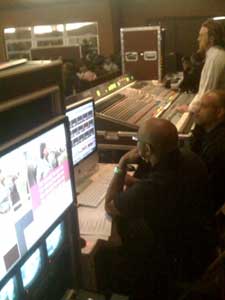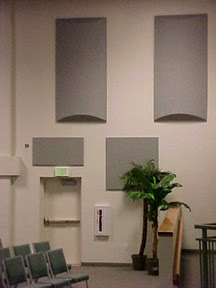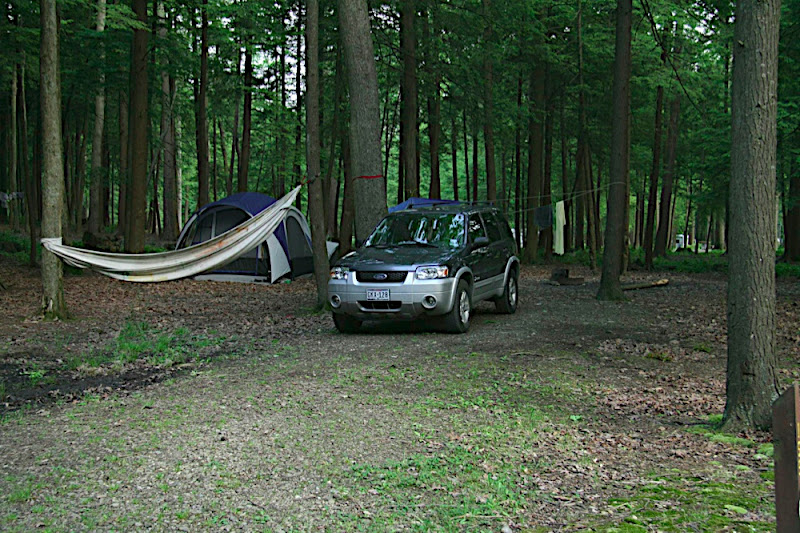Projects, Technology - by Jeff - November 4, 2009 - 08:20 Etc/GMT+5 - Be first to Comment!

Any time of the year, your tech team is busy planning on, preparing for or producing an extra service. Easter and Christmas tend to be the first bigger productions a tech team will have on a schedule, but the calendar is full of events that are outside of the normal weekly worship. Concerts, outreaches, conferences, VBS, holidays, awards, celebrations and facility rentals; each of these events requires additional planning, preparation, equipment, and crew. How can your creative, tech and media teams support these events, make them extraordinary, and yet endure well on the week to week support of the ministry? As a Media Ministry, we’ll define the purpose, put proper time into planning, and then systematically check each medium in place to support the event. Full Story
Excellence in the Arts, Technology - by Jeff - August 17, 2009 - 17:15 Etc/GMT+5 - Be first to Comment!

I read this blog post (Church Planters: Stop Wasting God’s Money) by Bob Thune this morning and I can say I completely agree with him. Yet- I also feel there is more to it that applies to more than just church planters. The people who make up the church often buy into marketing hype. They purchase goods and services they don’t really need. This side of the story is just as wasteful and probably more prevalent in the church. Full Story
Foldback, Media - by Jeff - August 10, 2009 - 10:56 Etc/GMT+5 - Be first to Comment!

As part of our ongoing upgrade, we have completed another set of changes in some of the websites related to this blog (mediaartsdad.com), the High Pointe media ministry and where you can expect what information to show up. Full Story
Technology - by Jeff - March 11, 2009 - 07:00 Etc/GMT+5 - 1 Comment
 The reverberation response of the room at different frequencies is one key measurement to examine in room acoustic design. What proper acoustic control does in a room is create a “live” feeling space while minimizing room excitement and slap-back to the platform, terms describing the effect of sound waves bouncing between the walls of a room and towards the stage. Well designed acoustical treatments will make it easy for hearers to listen, improve musician’s and vocalists’ performance space and reduce feedback, and clarify the sound picked up by the microphones to carry through to the loudspeakers.
The reverberation response of the room at different frequencies is one key measurement to examine in room acoustic design. What proper acoustic control does in a room is create a “live” feeling space while minimizing room excitement and slap-back to the platform, terms describing the effect of sound waves bouncing between the walls of a room and towards the stage. Well designed acoustical treatments will make it easy for hearers to listen, improve musician’s and vocalists’ performance space and reduce feedback, and clarify the sound picked up by the microphones to carry through to the loudspeakers.

Controlling reverb for the hearers
Acoustic control creates a good atmosphere for both musical worship and speech. Good control is making sure the spoken word is easy to hear while making sure the room is significantly lively for congregational worship. A singing congregation tends to sing more if they can hear themselves singing, thereby participating in worship. If the congregation can’t hear themselves singing, they tend to sing less; the atmosphere becomes more of a concert than worship. During speech- announcements, testimonies and sermons- it is critical to avoid ear fatigue.
Controlling reverb for the musicians and vocalists
Slap-back, long delayed reflections back onto stage, tend to muddy the sound. This makes it harder for the musicians and vocalists to hear themselves (distinguish themselves in the mix) so the stage is forced to drive louder volume levels. This sound is then jumping all over the room, creating a lot of noise that few find comfortable or appealing and musicians find frustrating.
Controlling reverb for the audio system and its engineers
The room acoustics need to work with the speaker system to keep the audio aimed on the congregation and absorb or properly disperse spill on the wall areas. The acoustics also need to help limit delayed sounds from bouncing back onto the stage and being picked up by the microphones, thus contributing to muddy sound and feedback problems. The ideal is a flat reverb where room acoustics are consistent across all frequencies (or pitch). When it comes to controlling sound, the acoustic device will be larger in size to accurately control larger frequencies (low tones) while higher frequencies (high tones) need smaller acoustic devices. Some of the room treatment will need to be fairly large, and these would be best placed on the large side walls or back walls above doors and windows. The mid to mid high frequencies are  balanced with the smaller panels. Other treatment options include clouds (larger treatments on the ceiling), sprayed on materials, different wall construction techniques and curtains or other soft goods.
balanced with the smaller panels. Other treatment options include clouds (larger treatments on the ceiling), sprayed on materials, different wall construction techniques and curtains or other soft goods.
Sometimes overlapping goals of acoustics compete. The needs of speech, instrumental music, and congregational singing require compromises in the design of the acoustic package, keeping costs under control. The solution is to design acoustic packages that balance these needs and provide a cost effective solution that improves all these areas.
Excellence in the Arts - by Jeff - October 24, 2008 - 02:11 Etc/GMT+5 - Be first to Comment!
A few general guidelines and recommendations about stage monitors, IEM and feedback.
- The more sound that is generated on the platform, the more the house audio system has to be turned up to “overcome” the volume of the stage, otherwise the sound off the platform sounds “muddy” or muffled in the house and the house audio technician has a hard time balancing the mix if they don’t have control of as much of the sound as possible. This is in part from sound on the stage coming out into the congregation, but also is caused by microphones on the stage picking up extra sound on stage besides what they are suppose to be picking up. Remember the microphone is the ear to the sound system, and is going to hear what ever sound is at it’s location. If you can put you ears where a vocal mic goes and hear a lot of instruments and amplified sound in addition to the voice, the mic will pick these up and amplify them thru the sound system, loosing the ability to have clean vocals and individual control over each audio source. So in general the goal is to keep the stage audio level as low as possible to avoid these two problems.
- IEM systems are great for lowering the stage volume because they allow the vocalist or musician to hear what they need to hear without the microphone “hearing” those sounds – BUT – the musician can only hear what they need to IF those things are going thru the audio system and monitor system. The most common complaint with IEM systems are that the artist feels disconnected from the congregation or from what is going on around them that might not be mic’ed. The solutions to these problems are two fold. First, microphones need to be put on everything that needs to be heard, in some cases this included the congregation, and second, the artist needs to be able to control they mix so they can balance what they hear appropriately. This control is the purpose of the Aviom musician mixer system.
- Feedback. No one wants it, but very few people understand what causes it so they can help avoid it. Feedback is caused when the sound the microphone is picking up is amplified by the sound system, and this amplified sound reaches the microphone at a louder level than the original sound. This louder sound is then amplified again and again, causing a “loop” which quickly turns into a very loud squeal. So how to avoid feedback? Make sure the original sound going into a microphone is louder than the amplified sound coming from the speaker back to the microphone. Several things can influence this, but in general:
- Keep the microphone as close as possible to the sound source. The closer the mic is, the louder it picks up the sound. For instance, with a voice, a lapel mic is ~8-10” away from the mouth. A handheld mic is typically held 3-5” away from the mouth. A headset mic is typically only 1” away from the mouth. A lapel mic is a lot more likely to feedback when trying to turn it up to the same level you use a handheld or a headset mic. Likewise, a headset mic typically is as loud as a very close held handheld mic and has a lot lower risk of feedback.
- Keep the speakers as far away from the microphones as possible. This is typically done partially thru using direction speakers and directional microphones where the speaker is projecting the sound one direction, and the microphone is picking up sound from the opposite direction. This is also accomplished using the acoustics of the room to control what sound reflects back to the stage.
- Use as high quality speakers and microphones as possible. Higher quality speakers and microphones have smoother pickup and response patterns, with less peak frequencies that are louder and more prone to feedback.
family, Media - by Jeff - September 2, 2008 - 19:37 Etc/GMT+5 - 2 Comments
Some of you might be wondering if this has just turned into a blog about what worked and what didn’t for our Sunday services – Hopefully not. I have had a lot of good intentions about blogging ideas here, and the weekly Foldback article should just be one of many blog post, but, as with many of you, I have been extremely busy lately. So I have several partial blog post started, that I might remember my ideas later, but no time to finish.
 So what has me so busy? I have been having a lot of fun lately. As many of your know I am on staff at High Pointe Baptist Church full time, and the media ministry is always growing and expanding, requiring care and feeding. But above and beyond of that I am also a Church Media Consultant for other churches and companies, and lately that has also been a full time job. In the midst of they two full time jobs, I have also started making a more purposeful effort to be a better dad and husband and make good quality time for my family.
So what has me so busy? I have been having a lot of fun lately. As many of your know I am on staff at High Pointe Baptist Church full time, and the media ministry is always growing and expanding, requiring care and feeding. But above and beyond of that I am also a Church Media Consultant for other churches and companies, and lately that has also been a full time job. In the midst of they two full time jobs, I have also started making a more purposeful effort to be a better dad and husband and make good quality time for my family.
 The family requires a lot of direction and planning, and my wife does a great job of helping hold everything together, getting kids to their appointments and practices on time, making sure we are all fed and clothed and general managing a large family, and I am very grateful for all she does. I won’t go into great detail about all that is going on there, as she also manages to keep her blog and facebook page well updated with all that is going on, and I would just be repeating a lot of what she has already said. But let’s say between school, football, soccer, scouts, youth, media, orthodontics, dentist, doctors, etc, etc, etc, we have been running all the time. And let’s not even talk about our remodeling projects!
The family requires a lot of direction and planning, and my wife does a great job of helping hold everything together, getting kids to their appointments and practices on time, making sure we are all fed and clothed and general managing a large family, and I am very grateful for all she does. I won’t go into great detail about all that is going on there, as she also manages to keep her blog and facebook page well updated with all that is going on, and I would just be repeating a lot of what she has already said. But let’s say between school, football, soccer, scouts, youth, media, orthodontics, dentist, doctors, etc, etc, etc, we have been running all the time. And let’s not even talk about our remodeling projects!
 On the consultant side of things I have been working on several really cool projects and several other projects are in the wings. We just finished helping The Father’s House in Vacaville CA with a new speaker system based around JBL line arrays and Bag End subs. This church knows how to ROCK and the system performed showcases their sound extremely well. Currently I am working on audio system design for 3 rooms in a childrens space expansion at a church in Kansas City (and these rooms have more AVL (audio / video / lighting) than many churches!) I am also picking back up a project that’s been on hold for a while in Oak Harbor, WA, reviewing and finishing the design work for audio and acoustics in their sanctuary and youth dome.
On the consultant side of things I have been working on several really cool projects and several other projects are in the wings. We just finished helping The Father’s House in Vacaville CA with a new speaker system based around JBL line arrays and Bag End subs. This church knows how to ROCK and the system performed showcases their sound extremely well. Currently I am working on audio system design for 3 rooms in a childrens space expansion at a church in Kansas City (and these rooms have more AVL (audio / video / lighting) than many churches!) I am also picking back up a project that’s been on hold for a while in Oak Harbor, WA, reviewing and finishing the design work for audio and acoustics in their sanctuary and youth dome.
 Then there is the ever growing list of media work at High Pointe. Last month our focus was on lighting in the Sanctuary and we were able to do many, but not all the repairs and mantainence needed in there. This month our focus is re-vamping the Livingston Training Room Audio and Lighting, and preparing the other training rooms for overflow and presentation needs.
Then there is the ever growing list of media work at High Pointe. Last month our focus was on lighting in the Sanctuary and we were able to do many, but not all the repairs and mantainence needed in there. This month our focus is re-vamping the Livingston Training Room Audio and Lighting, and preparing the other training rooms for overflow and presentation needs.
So there is my excuse….. but I will try to be a little more faithful in getting other blog post and updates worked in here.
Excellence in the Arts, family, thinking green - by Jeff - June 17, 2008 - 00:26 Etc/GMT+5 - Be first to Comment!
It’s been a while since I posted, a lot has been going on, so here is a brief rundown.
First of all, Vacation! Yes, my family and I actually took some vacation, and I really did take off a few days – that’s right, several days without ANY work! Now to be honest, we were gone 10 days, and I did work part of at least 5 of them. So what did we do? Our youngest 4 went to have a vacation with my parents in the Houston area, then Amy, our oldest 3 boys and myself took off on a road trip and camping.

We challenged ourselves to do this trip for as little cost as possible, so we pushed every mile per gallon we could out of our little hybrid Escape, avoided eating out as much as possible, camped or stayed with friends and family and had a fun time doing it. A big thank you shout out to all of Amy’s e-maginary friends that hosted us on the road and helped us with supplies and food camping (sorry, you just can’t fit that much food in that tiny SUV when you have 5 people and their stuff in there too!) A big thank you to our media team and church staff who covered all the happenings at church while we were gone also!
So where did we go? Photos and Google map are here: but the short of it is DC and then camping in NW Pennsylvania. We had a wonderful time but we are also glad to be home.

Planning Retreat – Yep, while I was sitting on a stump out in middle of a forest, spent a good part of a day and a half praying to reading scripture, listening to teachings and sermons and firing up the apple laptop and writing out a ministry plan for the media ministry for the 2008 / 2009 planning year. More details will be posted as we start to work thru the plan, but you can rest assured that we really do have a plan in place!

Consulting – it seems like when it rains, it pours. Right now we have a half dozen clients whose projects are in full swing and need design work done NOW. So I am in middle of several designs, working with the clients to meet their timelines and needs, all of which is keeping us very busy. With some careful planning and scheduling, it looks like we will be able to get everything done for everyone, but it is looking like a busy summer.





















